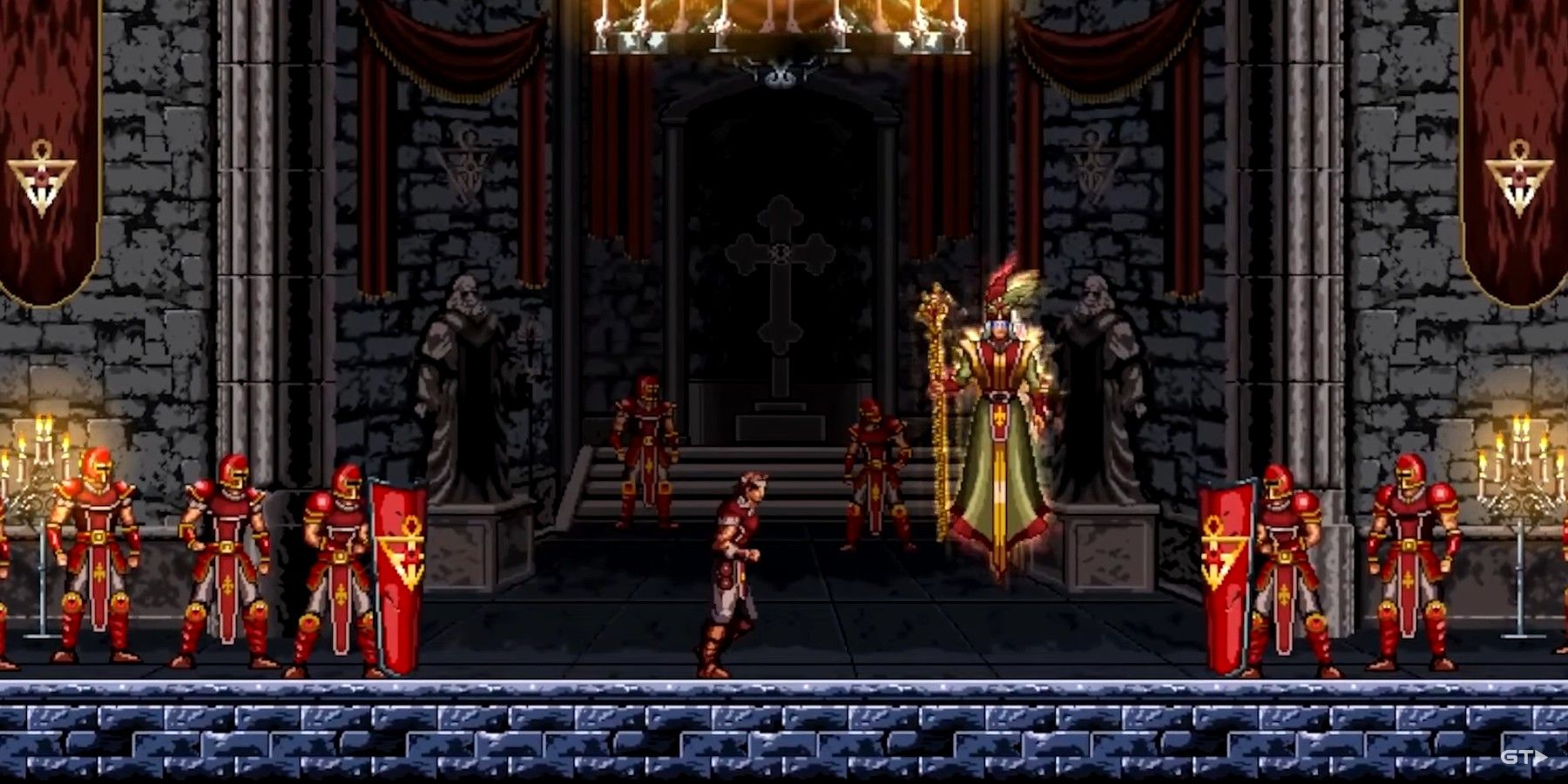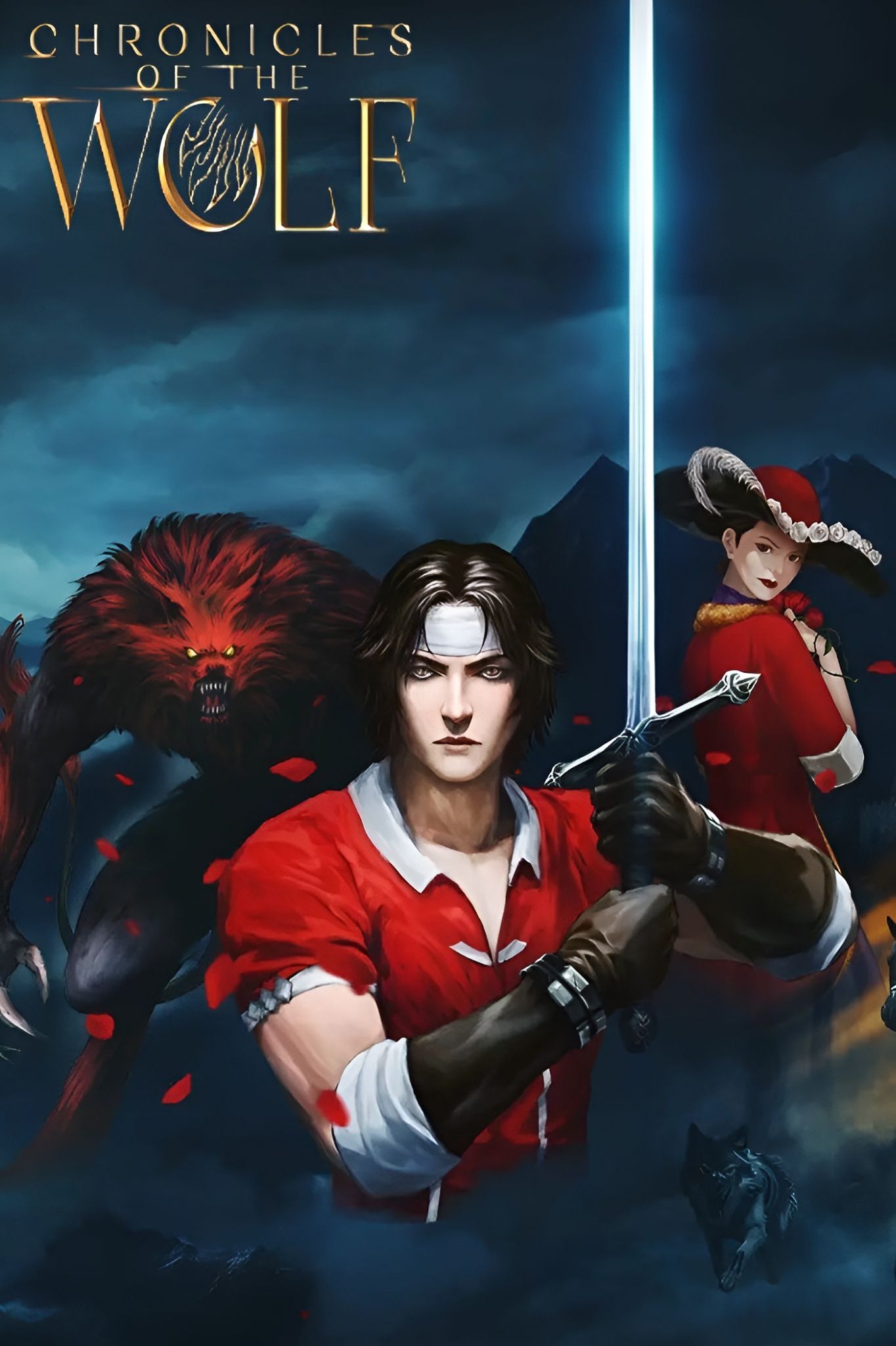Among dyed-in-the-wool Metroidvania fans, Migami Games is a well-known name. The French studio has long been producing fan games based on the Castlevania series, with both Castlevania: The Lecarde Chronicles and its sequel frequently cited as two of the best unofficial games set in the universe responsible for one half of the Metroidvania portmanteau. Migami took its experience making fan games and produced its first original action platformer, Wallachia: Reign of Dracula, back in 2020, and has now followed it up with its first original Metroidvania, Chronicles of the Wolf. In keeping with the spirit of what the studio has done best throughout the years, Chronicles of the Wolf is an unmistakable homage to old-school Metroidvania design. It’s clunky, occasionally obtuse, and there’s an ever-present layer of jank throughout the whole experience. I loved every second of it.
At its core, Chronicles of the Wolf is an obvious continuation of the “Igavania” style of Castlevania game design, following closely in the footsteps of Castlevania: Symphony of the Night and the myriad of Game Boy Advance and Nintendo DS titles produced by longtime series shepherd Koji Igarashi. But there’s also a surprising inclusion of some proto-Metroidvania game design in Chronicles of the Wolf that is both entirely unexpected and incredibly welcome. Longtime Castlevania fans will immediately be able to pick up on just how much Castlevania 2: Simon’s Quest DNA is present in Chronicles of the Wolf, and it’s a double-edged sword.
Chronicles may have the sprawling, interconnected map, RPG-style progression and upgrades, and multiple endings of the Igavania lineage, but it also packs in plenty of daunting puzzles, stiff movement, occasionally sharp difficulty spikes, and a general lack of clear direction that arbitrarily lengthens the experience. As someone who’s devoured every Metroidvania I can get my hands on since before the term was coined, I couldn’t put Chronicles of the Wolf down, but it is unabashedly old-school in a way that might turn off newer Metroidvania fans used to games like Hollow Knight and its ilk.
1:36

Related
Chronicles of the Wolf – Official Release Date Trailer
Take a look at the official release date trailer for Chronicles of the Wolf, an action-adventure game developed by Migami Games.
Chronicles of the Wolf Feels Like a Natural Successor to Castlevania’s Golden Era
The setup for Chronicles of the Wolf is appropriately gothic, given its obvious Castlevania inspirations, and incredibly well done for a genre not always known for its strong narrative pull. Based on the real-life events centered around the “Wolf of Gevaudan” and the mysterious slayings that plagued that region of France for several years (the very same historical inspirations for the film Brotherhood of the Wolf), Chronicles of the Wolf goes to some truly interesting places with its supernatural take on occurrences grounded in reality. But as good as the story is, most Metroidvania fans come to the genre for its gameplay, and it’s an area in which Chronicles of the Wolf shines.
While Migami’s previous game, Wallachia: Reign of Dracula, was a traditional linear action-platformer, Chronicles of the Wolf is a pure Metroidvania. The twin pillars of the genre, combat and exploration, are at the center of the experience, and they’re each appropriately satisfying for anyone who holds Symphony of the Night and similar Castlevania titles near and dear to their hearts. Players will start with a limited set of areas to explore, gradually uncovering new abilities and equipment that open up new avenues for exploration, give way to greater combat challenges, and present the occasional puzzle or stumbling block for players to overcome through either character progression, questing, or new ability upgrades.
In other words, Chronicles of the Wolf is a spiritual successor to the golden age of Castlevania in every sense. The closest comparison you could make is Symphony of the Night, and it does an admirable job replicating the general gameplay loop and atmosphere of one of the most beloved and important titles in the Metroidvania genre. All the standard abilities you’d expect to see are front and center — a double jump, air dashing, the ability to breathe underwater, and so on — but there are also some new twists that Migami puts on the formula that make it feel like a loving homage rather than an outright imitation. In particular, the slide ability is a standout that’s perhaps even more useful in combat (both regular enemies and boss encounters) than it is in getting through tight gaps in the environment. Plus, sliding through the map — while a bit immersion-breaking — never gets old as the fastest way to get from point A to point B.
Migami’s Adherence to Old-School Metroidvania Design in Chronicles of the Wolf is a Sword That Cuts Both Ways
If Chronicles of the Wolf‘s combat and character progression constitute the “Igavania” portions of its Castlevania influence, its exploration component is undoubtedly indebted to Castlevania 2: Simon’s Quest. And as anyone who’s played Simon’s Quest in recent memory can attest, that homage brings just as many frustrations as it does old-school charm. The Metroidvania genre is built on the twin pillars of combat and exploration, with rewarding character progression serving as the glue that binds them together. But at the time when proto-Metroidvanias like Simon’s Quest were being made (which took influence from games like Xanadu and The Maze of Galious), that formula was still in its infancy, lacking many of the modern flourishes that make it more palatable as the genre evolved.
Chronicles of the Wolf is admirable, and occasionally comforting, in its old-school homage to the genre’s origins, but it also isn’t without its fair share of pain points. Movement is an area where Chronicles‘ old-school influence sometimes hurts it, as controlling protagonist Mateo regularly feels stiff and unresponsive. It’s one thing to lose a fight against a challenging boss because you’re underleveled, but it’s another entirely to lose because the animations and input lag prevent your on-screen avatar from responding in time. Outside of combat, platforming can be a bit janky, which ultimately comes to a head near the end of the game. After hours of minimal platforming, it becomes a central component of traversal, and there’s even a major platforming challenge to overcome before getting some hugely important upgrades that make attempting 100% substantially easier.
Perhaps the most polarizing aspect of Chronicles of the Wolf‘s old-school, proto-Metroidvania homage, though, is the way the game handles puzzles and quests. Players will acquire a substantial amount of upgrades throughout Chronicles of the Wolf, each of which is practically essential in clearing some ability-gated progression block or completing a quest leading to the game’s “true” ending. But like in Castlevania 2: Simon’s Quest, the guidance you’re given for these missions is bare minimum, leading to a fair amount of frustration as you ping-pong across the map looking for something you may have missed or an NPC to talk to again to get clarification. It doesn’t help that the map lacks any semblance of the modern quality-of-life features that Metroidvania fans have come to expect, meaning you can’t bank on leaving markers pointing to specific areas of question that may lead to progress.
Players Are in For a Sizable Experience With Chronicles of the Wolf That Mostly Delivers
But in spite of the frustrations that Chronicles of the Wolf‘s old-school approach presents, it’s still undeniably an incredible Metroidvania. Especially for fans of the genre who cut their teeth on the portmanteau’s origins — Super Metroid and Castlevania: Symphony of the Night — Chronicles of the Wolf feels like a glorious homecoming. To say that games like this simply aren’t made anymore is an understatement, and Chronicles of the Wolf packs a surprising amount of content in its runtime.
To truly dive into Chronicles of the Wolf and get the full experience, I opted for a longer playthrough where I was able to unlock all the game’s multiple endings and eventually see the “best” ending that requires reaching 100% completion. Doing so took just under 10 hours.
Chronicles of the Wolf is not for everybody. It’s not even for all Metroidvania fans. But for those that it clicks with, it very well may be the best game in the genre you’ve played this year. It’s not without its fair share of frustrations as far as its mechanics and gameplay go, but the elegance of its design and the obvious passion that Migami poured into it make those frustrations worth bearing. If you can look past a little bit of jank and forgive Chronicles of the Wolf for its old-school sentimentality, what you’ll find is one of the year’s best Metroidvanias on par with the best of what the genre has offered in 2025.

Chronicles of the Wolf
Reviewed on PS5
- Released
-
June 19, 2025
- Developer(s)
-
Migami Games
- Publisher(s)
-
PQube, PixelHeart
- Old-school Metroidvania that calls to mind the genre’s classics
- An impressive amount of secrets and equipment to uncover
- A surprisingly great narrative and multiple endings
- Movement can feel stiff at times
- There’s a layer of ever-present jank that some players might not be able to look past

